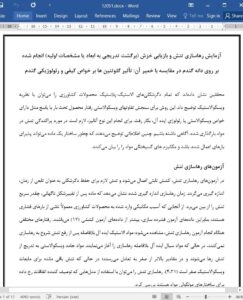Researchers have shown that the overall elastic-plastic deformation of agricultural products can be explained by the theory of viscoelasticity. The method employed to measure viscoelasticity compares the behavior of the product under load with the response of an idealized viscoelastic or rheological model. To perform this type of analysis it is necessary to have some knowledge of stress distribution in loaded materials. Such information provides an explanation of how the structure of a material is able to support applied loads and explains the mechanisms of failure.
Stress Relaxation Tests
In stress relaxation tests, a constant strain is applied, and the stress required to maintain the deformation is measured as a function of time. The measured relax ation time indicates how fast the material dissipates stress after sudden deformation. Because mechanical damage to agricultural products usually results from compressive loads, more data can be found for compression tests than for tensile tests (17). When a stress relaxation test is performed, different behaviors are observed: ideal elastic materials do not immediately begin to relax, whereas ideal viscous materials instantaneously begin to relax. Viscoelastic solids gradually relax and reach an equilibrium stress greater than zero, whereas the residual stress for viscoelastic fluids is zero (4,21). Stress relaxation can be examined using models to assist in describing what is happening to structures at the molecular level.
Conclusions
We have summarized examples of fundamental measurements of viscoelasticity of wheat kernels and doughs using stress relaxation, creep, and creep recovery tests. Often, the only method for determining quality accepted by plant breeders, millers, and bakers is a baking test. Fundamental rheological tests are frequently applied for more basic studies, but their use is not widespread enough for the characterization of a large number of cultivars. In addition the relationships between fundamental rheology and baking quality have not been sufficiently examined.











